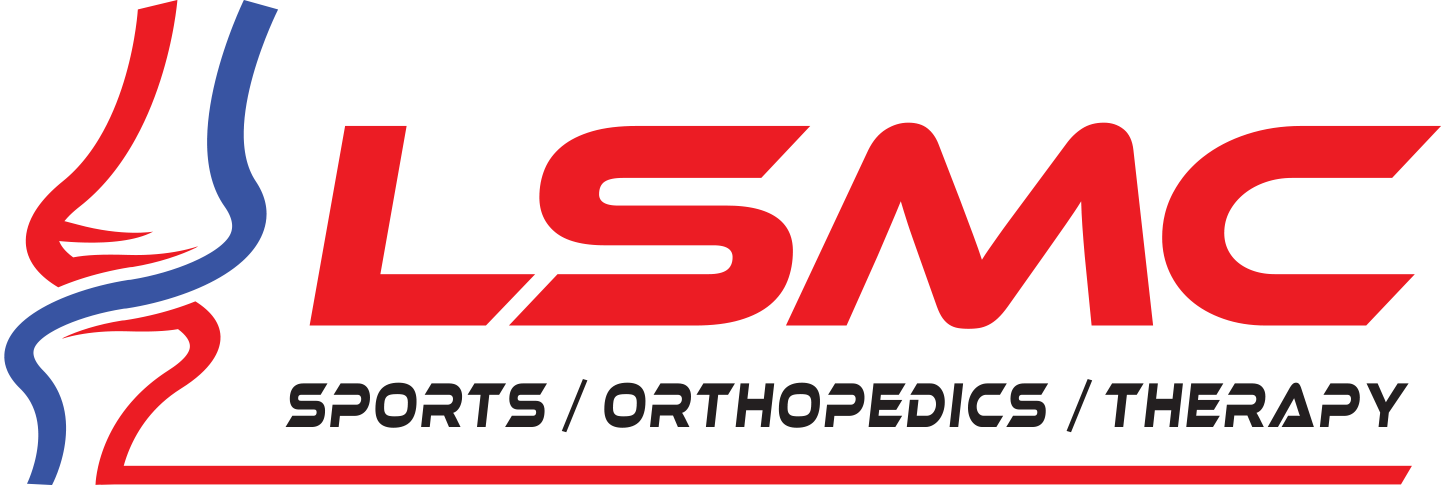Rehab on the Rise
It all started with a pothole. I was almost at the end of a four-mile run, focused on finishing and getting on with my day, when suddenly I was tripped up by a large crack in the asphalt and landed hard, smack on my right knee. Even though the knee throbbed for days afterward, I pushed through my usual workout routine, figuring it would get better on its own. Only, it didn’t. When I finally made my way to an orthopedic surgeon for an exam, it turned out that one of the tendons holding my kneecap in place was seriously swollen. The Rx: physical therapy.
I was skeptical. Wasn’t PT reserved for hard-core athletes and the elderly recovering from hip replacement surgery? To my surprise, the rehab center my doctor recommended was full of women just like me — young, fit, and trying to get back to the activity they loved.
“Judging from the increase in physical therapists, it’s estimated that the number of people receiving PT services has grown from about 1.2 million per day in 2000 to 1.6 million per day in 2008. This is a jump of almost 40 percent in less than a decade,”
says Andrea Avruskin, DPT, a spokesperson for the Nevada Physical Therapy Association. The U.S. Bureau of Labor Statistics predicts that the industry will grow by nearly a third by 2016 — about three times the national average — outpacing similar professions, like nursing and emergency medical services.
Part of the reason for the increase is that sports injuries themselves are on the rise: Close to 20 percent of us got one in 2008, up from 14 percent in 2000. At the same time, there’s been a shift away from the idea that plain rest is best for recovery.
“We used to treat these injuries with the RICE method — rest, ice, compression, and elevation. There’s still some of that, but studies show that the best way to speed up recovery is to get you moving as soon as possible,”
says FITNESS advisory board member Vonda Wright, MD, an orthopedic surgeon at the University of Pittsburgh Medical Center.
“Say you sprain your ankle. You still have two good arms and one leg to work with. If you sit at home doing nothing until it’s healed, your ankle will be stiff and weak, and the rest of your body will also be out of shape.”
For this reason, doctors now prescribe physical therapy to keep you active and prevent the injured area from atrophying.
Move It to Improve It
This active rehab approach is backed by a host of new research.
“Recent studies comparing surgery to physical therapy for the treatment of problems like knee and back pain indicate that seeing a therapist can often result in a better outcome — with less medication and reduced cost — than seeing a surgeon,”
Avruskin says.
While men still account for a higher number of athletic injuries than women, the type of exercise-related problems we get makes us ideal candidates for PT.
“Women are predisposed to hurting their hips, knees, and backs, in part because of alignment issues; our hips are much wider than our lower body, and that can put excessive strain on the joints and ligaments,”
says Wendy Katzman, PhD, assistant clinical professor of physical therapy at the University of California, San Francisco. Muscle strength also plays a role. One study found that female athletes suffered tears to their ACL, one of the major ligaments in the knee, at a rate up to six times higher than their male counterparts.
“If the hip muscles don’t have sufficient strength to stabilize the knee, injuries happen,”
says Pete McCall, an exercise physiologist with the American Council on Exercise.
Tabatha Thompson, 35, of Louisville, Kentucky, discovered this the hard way after persistent knee pain kept her from competing in a series of races that she’d trained for. A friend suggested she see a physical therapist.
“My therapist found that my right hip was so weak that I’d been leaning on my stronger left side to compensate,”
Tabatha says. A routine that focused on strengthening her glutes and hips so her knee wouldn’t have to do so much work allowed the joint to heal. A few months later Tabatha was back to her regular six-mile runs, but now she was pain-free.
What Happens in Physical Therapy
So, could you benefit from a few sessions? If you have a pain that lingers after a week’s rest, get a consultation, says FITNESS advisory board member Marty Jaramillo, a founder and CEO of I.C.E. Sports Therapy in New York City. Even though you may not need a doctor’s referral to get an appointment, Dr. Wright says it’s best to see your MD first for a diagnosis, then follow up with a physical therapist. If you’ve never been to physical therapy, picture a facility not unlike your local health club. Most clinics are housed in gyms, hospitals, or private offices and contain equipment such as treadmills, exercise balls, weights, and foam rollers. For your first appointment, ask what you should wear; comfortable, loose clothing and sneakers are usually best, says Susan Chalcraft, president of the Washington State chapter of the American Physical Therapy Association.
Once you’ve checked in, you’ll meet your therapist, who will “test your strength, range of motion, joint stability, and flexibility to determine what underlying issues may have contributed to your injury,” Jaramillo explains. After the evaluation, your therapist will come up with a treatment plan to rehab the injured area, strengthen the surrounding muscles, and prevent you from getting hurt in the future.
On subsequent visits you’ll perform a series of stretching and strengthening exercises. Your treatment may also call for ice or heat, massage, ultrasound (to reduce inflammation and pain), and/or electrical stimulation (a painless electrical current directed at the injured muscle to improve blood flow, increase strength, and relieve discomfort). You’ll be asked to do the exercises a few times a week on your own.
“There’s only so much we can accomplish during an hour,”
Chalcraft notes. “That’s why we ask you to work out at home too.”
Minor injuries — a strained glute or an ankle twist — should feel significantly better within five visits (two per week), each of which lasts from 30 to 60 minutes depending on the clinic, Chalcraft says. More involved conditions, including tendinitis and plantar fasciitis, usually require about 12 visits over the course of four to six weeks.
Can Physical Therapy Prevent Injury?
But PT isn’t just for the wounded. Many clinics offer preventive evaluations to determine muscle weaknesses or other imbalances that could lead to injury. If a problem is identified, the therapist will provide exercises to keep an issue like tight hamstrings from turning into something more serious, such as a hamstring tear. “Most injuries are the result of long-standing weaknesses,” says Kim Wallace, vice president of clinical operations for Excel Physical Therapy and Fitness in Philadelphia.
“Correcting those problems now can save you a lot of stress and money later.”
Indeed, in one study, PT reduced ACL injuries by 41 percent.
If you can’t touch your toes or complete a deep squat without pain, you should definitely consider making an appointment, says Kyle Kiesel, PhD, associate professor of physical therapy at the University of Indiana at Evansville. These are often signs of an underlying problem, such as tight hamstrings or underdeveloped glutes.
How much will you have to shell out for all of this rehab? According to the therapists we spoke to, an initial visit can run from $75 to $250, depending on the clinic and where you live; follow-up visits average $85 to $110. What you’ll actually pay depends on insurance. “Physical therapy is a basic benefit of almost all plans; most companies cover from 50 to 80 percent of the visit after the patient copay, which is usually $5 to $40 per session,” says Richard S. Katz, chairperson of the payment policy committee of the California Physical Therapy Association. Insurers can also cap the number of visits allowed, sometimes paying for as few as four for a minor injury.
Part of the discrepancy in coverage is that many insurance companies underestimate the effectiveness of PT. Slowly the perception is changing. A bill recently introduced in Congress increases access to therapy services for Medicare beneficiaries by removing the need for a physician’s referral, something that many state laws have already allowed. The physical therapy community is also lobbying insurers to expand coverage, reduce out-of-pocket patient costs, and pay for treatment without a doctor’s referral. Theresa Barnes, 34, an avid runner in Indianapolis, needed a referral to physical therapy after pain in her right hip made her daily workout impossible. By the time she called her doctor,
“the pain was so bad that just going to the supermarket was difficult,”
Theresa says. During her evaluation the therapist discovered that her hip muscles were significantly underdeveloped. Enter: Three months of squats, ball taps, and leg lifts. Today, Theresa is strong and healthy.
“I’m enjoying running a lot more now,”
she says.
“Had I known how quickly physical therapy would get me back on my feet, I would never have waited so long to go.”
3 Ways to Choose a Physical Therapist
Find healing help with these tips from Susan Sigward, PhD, of the University of Southern California.
- Get sporty. Pick a clinic that’s geared to athletes, even if you consider yourself an average exerciser. This will ensure that your therapist understands your fitness goals.
- Look at the letters. Does the clinic have a sports certified specialist (SCS) or an orthopedic clinical specialist (OCS)? These certifications require extra training in the treatment of sports injuries.
- Do a background check. Ask how frequently your therapist deals with injuries like yours. If the answer is rarely, request someone with more experience.
Article courtesy of fitnessmagazine.com, Maura Kelly









